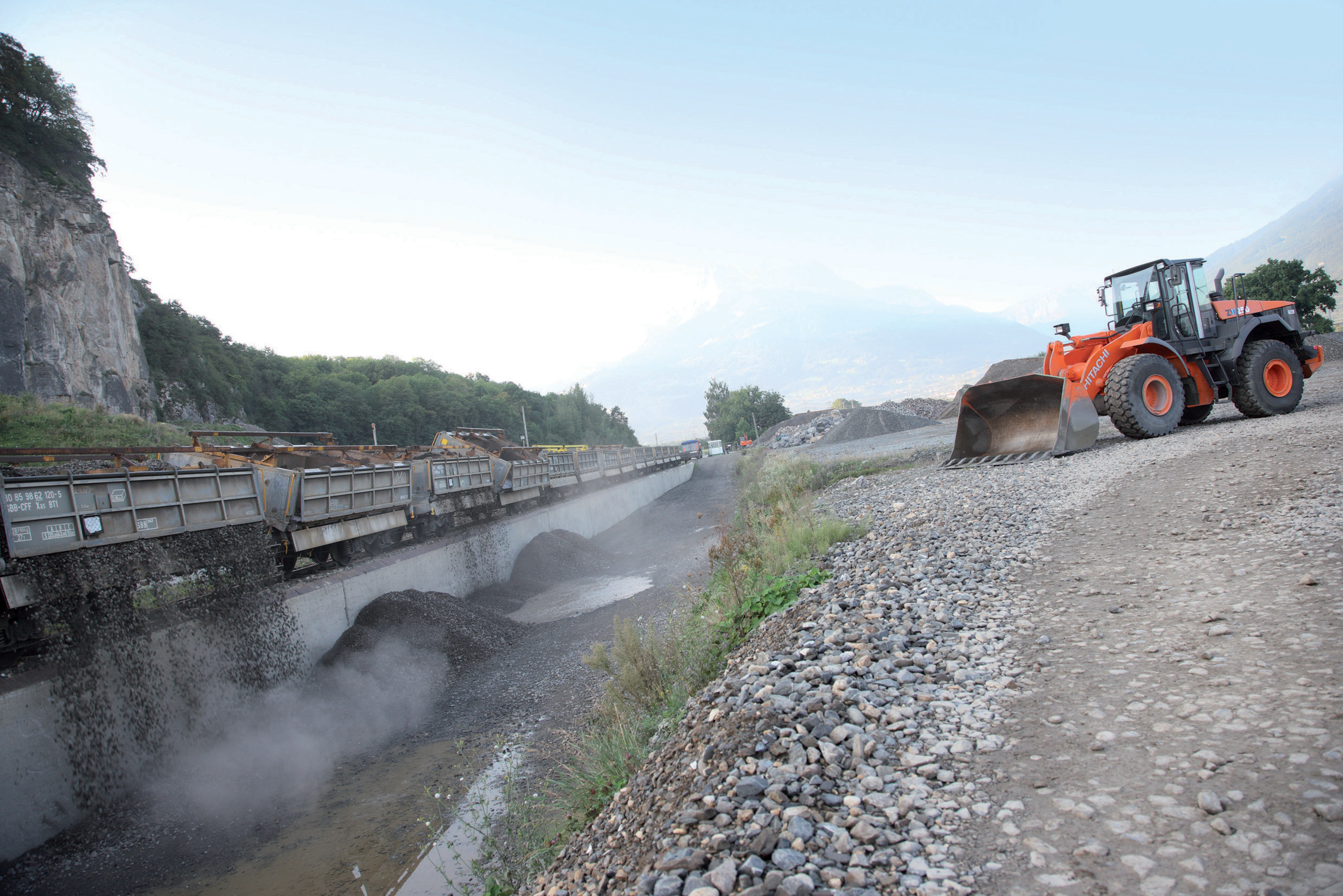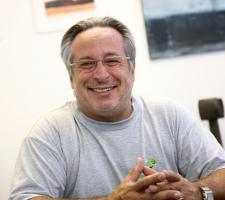
Reaching the end of reserves in a family-owned quarry operation is normally a time to wind down, but swiss-based Carriers De Lessus has found new opportunities for Its final years
Consolidation in Europe's quarrying business means that many familyowned operations are now in the hands of multi-national corporations. But there are still some thriving locallycontrolled businesses, which continue to enjoy success despite the difficulty to expand and access new reserves.
One such business that is finding new opportunities despite reaching the end of its quarrying consent is Switzerland's Carriers de Lessus - after 80 years of ownership by the Briquet family, the operation is now in its final stages. Nonetheless, current managing director Luc Briquet - grandson of the original founder - is not winding down but has refocused on recycling and is still investing.
Briquet knew 10 years before the end of the reserves were reached that an extension would not be possible and he started to look for a new opportunity for the company. This led him into the recycling sector.
History
The quarry exploited the limestone hill at St-Triphon in the Ollon community of the Canton De Vaud. The quarry is at the base of Charpigny Hill - a limestone outlier in the surrounding glacial plane of granite deposits. The limestone is 200million years older than the Alps.
The material is very strong but varied with some parts being very smooth and almost like marble from thermal contact with the granite intrusion. This black coloured 'marble' was used for many buildings in the region, whereas the standard limestone was used for a variety of construction applications.
The site was operated as a quarry until 2000 when Lessus ran out of authorised reserves and no further consent could be obtained.
"The hill was protected, partly because of the geology and natural flora and fauna due to the microclimate, which is similar to that of southern Switzerland, but also because of its historical significance - the village of St-Triphon was the location of a Roman market and there are two towers in the village that date back to that period," explained Briquet.
Before the quarry operation ceased, Lessus used to extract 80,000 to 100,000tonnes of aggregates each year and Briquet said that it used to fetch a good price "Much of the material was used by the railway sector and the high quality 'marble' was much sought after for monuments, but some of the aggregates were also used for road construction," he said. "We also produced building sand and blocks for river construction work." Next door to the Lessus site, there is an asphalt plant that has been there since the site produced primary aggregates, but it now also buys secondary materials from the company.
"It is normally a legal requirement to restore a quarry when it has finished extraction and that is what the final aim of the work here will be, but we were able to get permission to continue recycling while restoring the site," he said.
"The ultimate aim is to restore the hillside - we have no idea what it originally looked like though. We have several parts to the restoration - we operate the backfill in containerised sections to keep the incinerator fly ash and inert waste from construction and demolition sites separate." The sections are reinforced with geotextiles for stability and all the leachate water is collected and monitored. The site has a 100,000litre tank which stores the water until it is certified as clean and allowed to be released into the local river. But while this restoration is going on at the former quarry face, the quarry floor is being used to reprocess secondary aggregates.
The company's main activity is recycling of rail ballast. Material comes directly into the site on rail sidings from all over the French-speaking part of Switzerland. "We wash, crush and screen between 30,000 and 40,000tonnes of secondary material each year and much of it goes for reuse in minor roads and other construction applications and some is also used in the landfill operation," said Briquet.
The recycling work varies - sometimes there is one train a day arriving for a month and others there may be just one a week.
Briquet said that the legislation to set up the recycling operation is complicated.
"It is difficult to convince the state that you will comply with the requirements and offer guarantees of legal operation," he said. "We have an
"I am 60 now so will not be looking to extend the business beyond the restoration. My two children are not interested," he said.
Family ties
Briquet himself did not intend to work in the business full time and trained as a lawyer at university before working in banking and insurance auditing. "I always helped at the quarry part time but in 1991 I could see that the company needed to find a new future, so I started to work here full time," he said.
Before that the quarry was run by Briquet's mother and uncle, while his brother - who sadly has passed away - worked on the technical side, while Briquet carried out administration for the business.
Investment
"I worked in the quarry to understand the industry but I used to be more interested in the commercial side of things but in the last 18 years I have been learning about geology to better understand the machine needs," he said.
Unlike other quarry operators in the region, Briquet has gone against convention and chosen to invest in larger machines and always opts for new ones too, replacing them when they reach a certain number of hours.
He recently invested in a new fleet of
"If you buy new, then can sell them when they are still a good secondhand machine so the cost to invest is less and you have a greater confidence in the performance," explained Briquet.
"Previously, the quarry always used secondhand machines but new ones are better politically because they are less polluting, offer better fuel economy and present a good image of the company as one that cares about the environment," he said. "You just can't work with machines that pollute if you are recycling, but more importantly, newer machines offer higher productivity." While Briquet may be investing in modern technology, the roots of the company in his family history are still plain to see - the
Briquet's grandfather's original office is still standing and being used by a local sculptor. Briquet moved the office side of the business to a modern block with workshop facilities during the early years of his tenure.
Some of his earliest memories relate to the quarry - he grew up living in a house next door to the site with his grandmother. He recalls going to watch the machines at work and being taken back to his grandmother by the quarry foreman on many an occasion.
"I used to sometimes sit in the machines with the operators," he said.
"But times have changed and it is very difficult to open new quarries these days.
There is a lot of opposition from people - noise and dust is a big issue with local communities. But this country needs more aggregates - some are imported from France and Germany but the cost of transport is high.
"I recently wanted to import some material from France but the cost of the rail freight from the French border to here was the same as taking it from mid France to the border - it is just too expensive and there is no profit to be made." Briquet believes that there will have to be a change in attitude before long or the country will be almost solely reliant on imported material.
"The environmental focus is very strong in Switzerland," he said. "It is a good thing but if it is too strong, then it is not - there is a need for some middle ground. Environmental precautions can cost too much and they are not considered in context of the benefit or cost." Briquet believes that these measures mean that quarrying is becoming an unprofitable business in Switzerland and, with the restrictions on opening of new quarries, reserves are not being replaced at a sustainable rate.
While he is proud of his family's business and history at the quarry, it is clear that Briquet is almost relieved that his children will not have to struggle against increasing legislation to maintain the operation. "I am not looking for any new opportunities to sustain the operation here beyond restoration," he said. "This is the final chapter for this quarry."

















